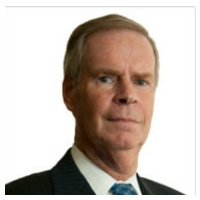
Exclusive
OMB to give agencies a bigger voice in move to shared services
The Office of Management and Budget released a new memo May 4 formalizing existing initiatives and creating new efforts to help agencies move to shared services...
Over the last decade, the effort to move agencies to shared services has been missing a few important ingredients: the voice of the customer and an efficient approach to matching supply and demand.
The Office of Management and Budget is trying to solve both of those issues as it continues to put in place foundational pieces to make administrative shared services more successful today and for years to come.
OMB Director Shaun Donovan signed out a memo May 4 formalizing existing initiatives, and creating new elements to move agencies to human resources, acquisition and financial management shared services.
Additionally, OMB announced its plans to release a shared services playbook later this summer to further standardize the steps needed to move to a federal provider.

“Heretofore it was sort of haphazard as to how people decided which shared service provider they were going to utilize. The playbook is going to give us that more disciplined approach and yet flexibility to meet the needs of the particular department or subcomponent of a department,” said David Mader, the OMB controller, in an exclusive interview with Federal News Radio. “The playbook will give us that end-to-end lifecycle of ‘I think I want to go to a shared service provider and what are the steps I need to go through, and then how do I successfully get to the other side.’”
The playbook will include lessons learned and best practices, but also ensure agencies, through the Unified Shared Services Management (USSM) office, which the General Services Administration runs, follow a standardized process as they decide if shared services is the best approach, and if so, which provider is most appropriate and what steps are necessary to make that effort successful.
John Marshall, president of the Service Services Coalition, praised OMB steps but said more needs to be done legislatively.
“The administration is doing everything it can through Executive Branch authorities to strengthen governance, institutionalize progress and pick up the pace of implementation,” Marshall said. “Congress still needs to act to fix the financial model and provide legislative underpinnings necessary to ensure long-term sustainability across the next and future administrations. ”
An important piece to any successful move to a shared service provider is for the agency customer to understand what it’s getting into around cost, service levels and new capabilities.
This is why OMB in the last month created a new customer council, led by Ellen Herbst, the assistant secretary for administration and CFO for the Commerce Department, and Beverly Babers, the deputy assistant secretary for management and Budget at the Treasury Department.
“One of the key lessons that we’ve all learned from shared services is that you need to factor in the voice of the customer in how you deliver your services and as a provider you need to be accountable to your customers for the delivery of the quality and cost of the services they are engaging with you,” Mader said. “Because we’ve allowed these shared service providers to grow up in stovepipes, the customer council is going to allow us to look across all of these administrative functions and get a clear understanding of what are the customer’s needs and how do you translate those into service delivery elements, and also determining what is the price point for the service to be provided. Part of this is a very different business model where you will have buyers and sellers where people can enter and people can leave. So it’s important to have educated providers and educated customers.”
$3 billion a year on administrative systems
And there seems to be plenty of customers to be had. OMB estimates agencies will spend about $3 billion in fiscal 2017 on these administrative support functions. Beyond payroll services, only a handful of the major agencies have moved to a shared service provider with the Department of Housing and Urban Development being the largest agency so far. HUD completed a major part of its move to Treasury’s financial management service in October.
At the same time, OMB also created a new provider council to help Treasury, the Agriculture Department, the Defense Department, the Department of Health and Human Services and the Interior Department tackle similar challenges together.
Mader said the provider council includes 15 agencies including OMB, GSA and the Office of Personnel Management.
“This is the first time that we brought together financial systems providers, HR system providers and acquisition system providers to work together as a cohesive council to work on initiatives together and share best practices,” he said. “They are all in the same kind of business; they are a shared service provider. There is an inherently fundamental benefit from getting providers, whether financial management systems or HR systems together. I also think that the importance of this is to get consistency in the understanding of the kind of business that you are in. It really is about providing service to your customers so building in that customer mentality is part of the success to administrative shared services. It’s not just about looking at the cost. You need to look at the cost, you need to look at the efficiency and you also need to look at the customer satisfaction and the delivery of those services that people expect.”
Mader said both of the councils are government only so industry is not part of those efforts. But he said he will continue broad interactions with contractors and industry organizations to get their feedback and insights.
A new ‘stat’ session under development
To help set those success factors, GSA’s Unified Shared Services Management office is developing a new initiative called ProviderStat.
Mader said through this effort, the USSM office will collect performance statistics from each of the providers.
“What we will be doing across all of these administrative functions is we now are going to be able to set standards. If [an agency] goes to one provider for a certain service, they are going to be ensured they are receiving the same level of service as if they went to provider B,” he said.
One major challenge the memo and the new initiatives don’t readily address is the long-term funding and sustainability model for these efforts. Over the last decade, experts in and out of government expressed concerns over how these shared service providers could modernize systems and processes, hire more staff to keep up with demand and work more like the private sector.
Mader said OMB is looking at the existing funding models to ensure shared service providers can pay for their needs today and tomorrow.
“We are not in a position yet to say, ‘Yes, we need a legislative change.’ My sense is it will take us another six or so months to finish the analysis and then have a debate about whether it’s around the interpretation of existing legislation or in fact do we need some additional changes … that authorize franchise funds and working capital funds. We don’t want to just automatically raise our hands without doing the due diligence and the analysis.”
In the meantime, Mader said once the playbook is completed, OMB will lead the effort to have agencies begin using it. He said several are looking to move to human resources or financial management shared services.
He added the USSM office will finish collecting the data under the ProviderStat effort this summer and begin using it to come up with the standardized service level agreements.
Copyright © 2025 Federal News Network. All rights reserved. This website is not intended for users located within the European Economic Area.
Jason Miller is executive editor of Federal News Network and directs news coverage on the people, policy and programs of the federal government.
Follow @jmillerWFED





